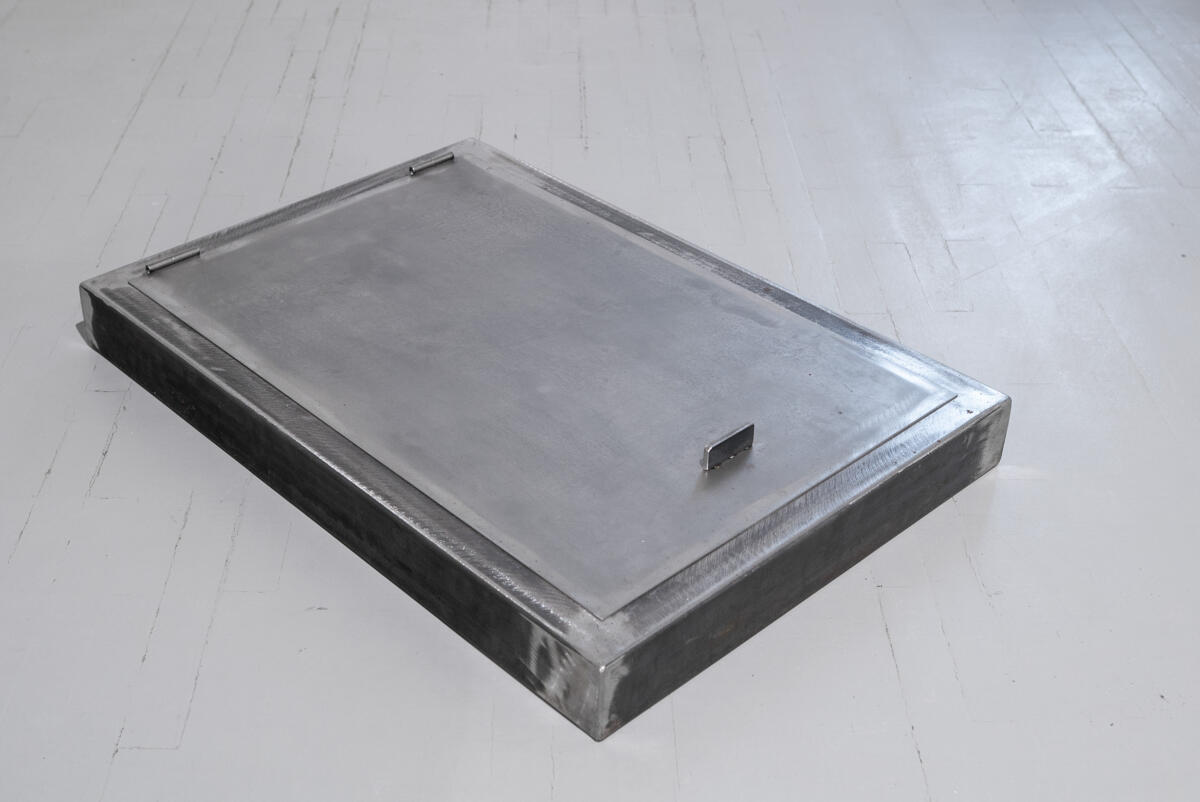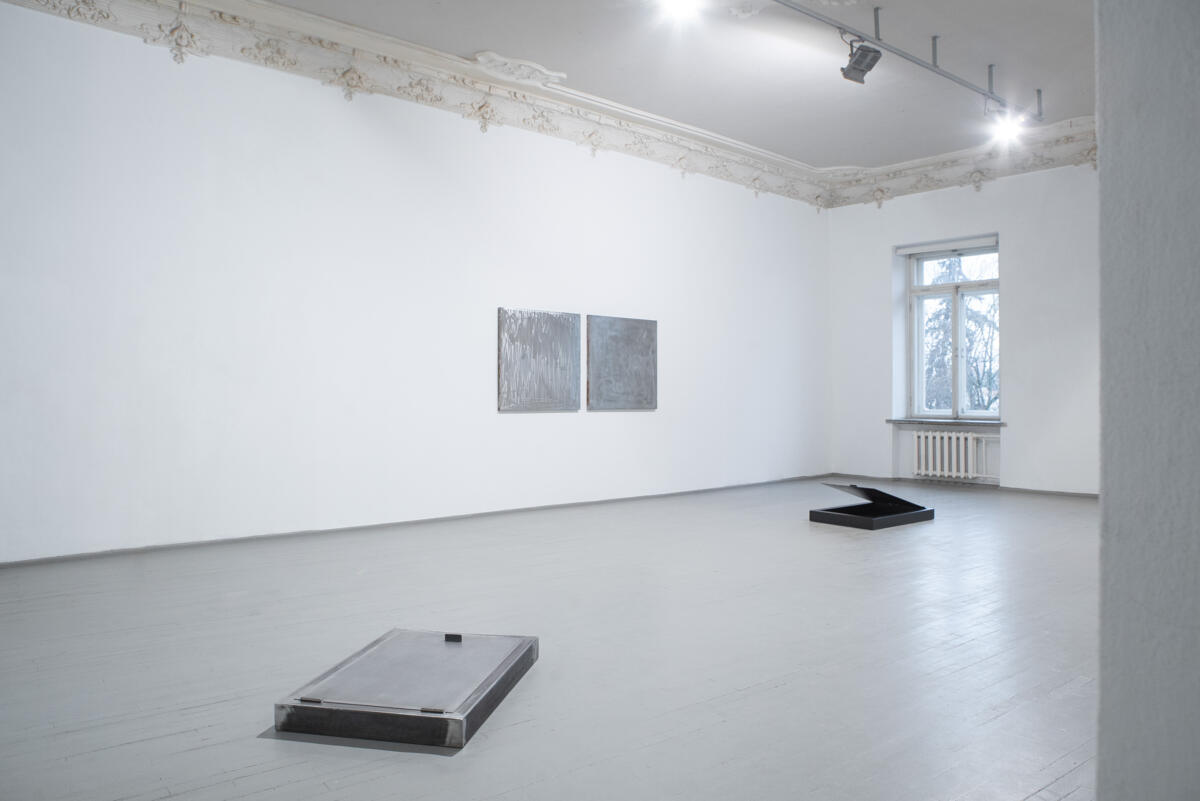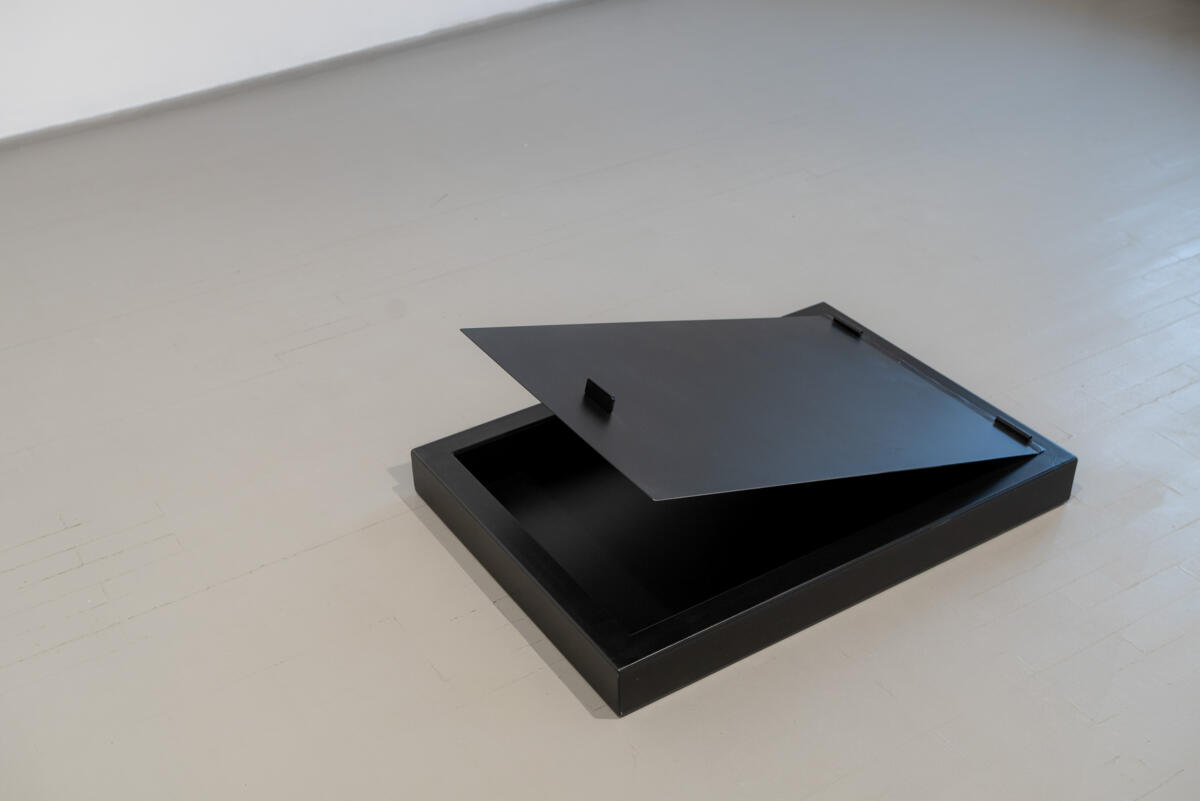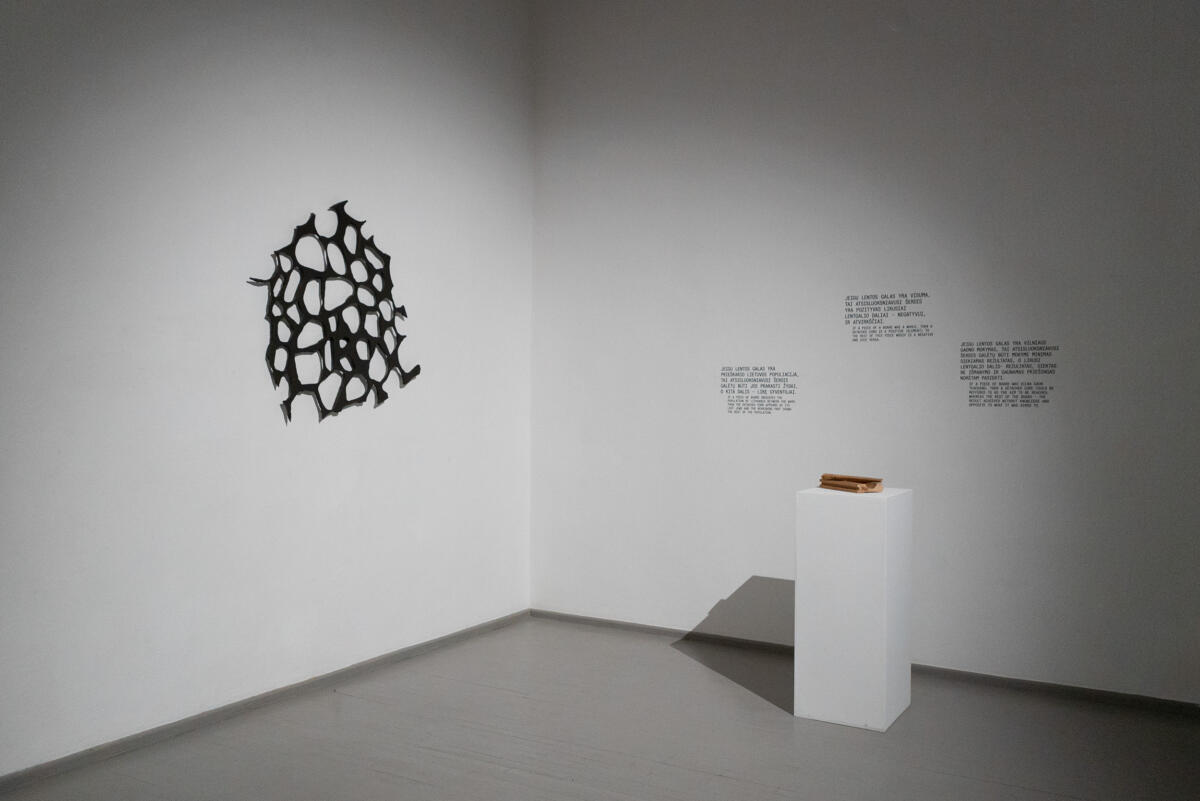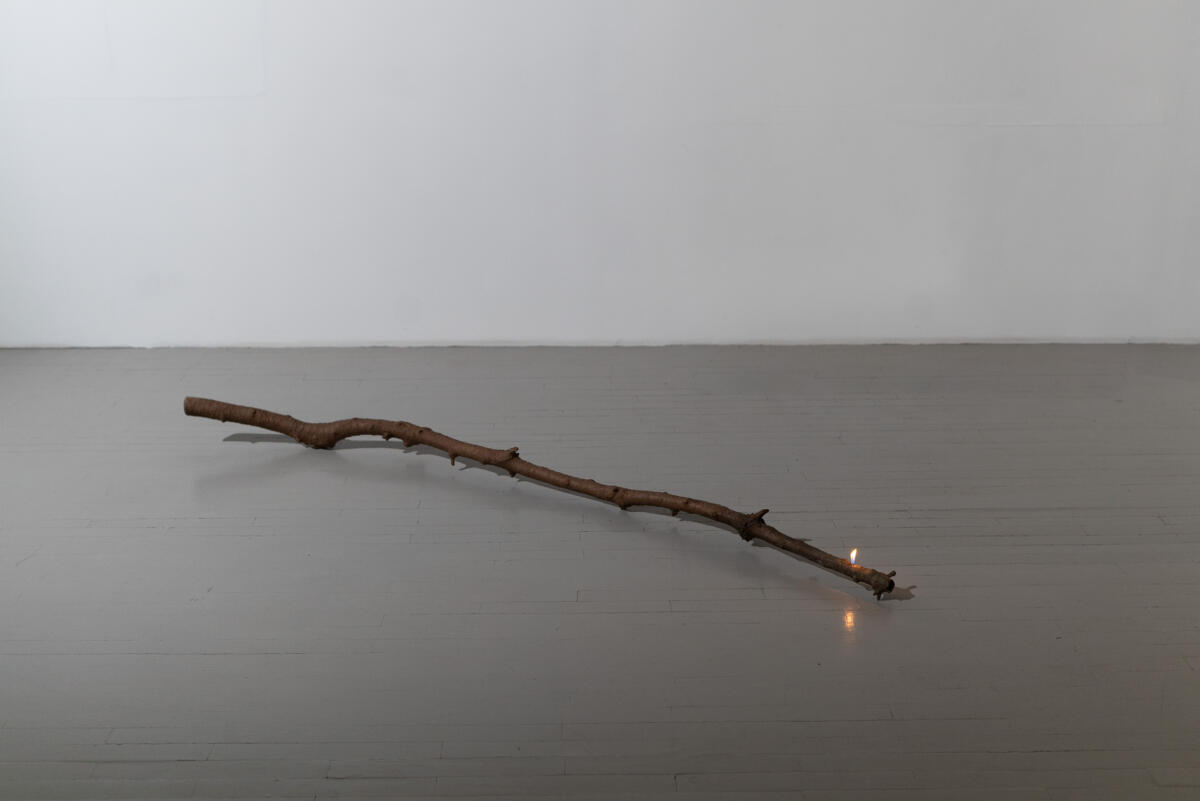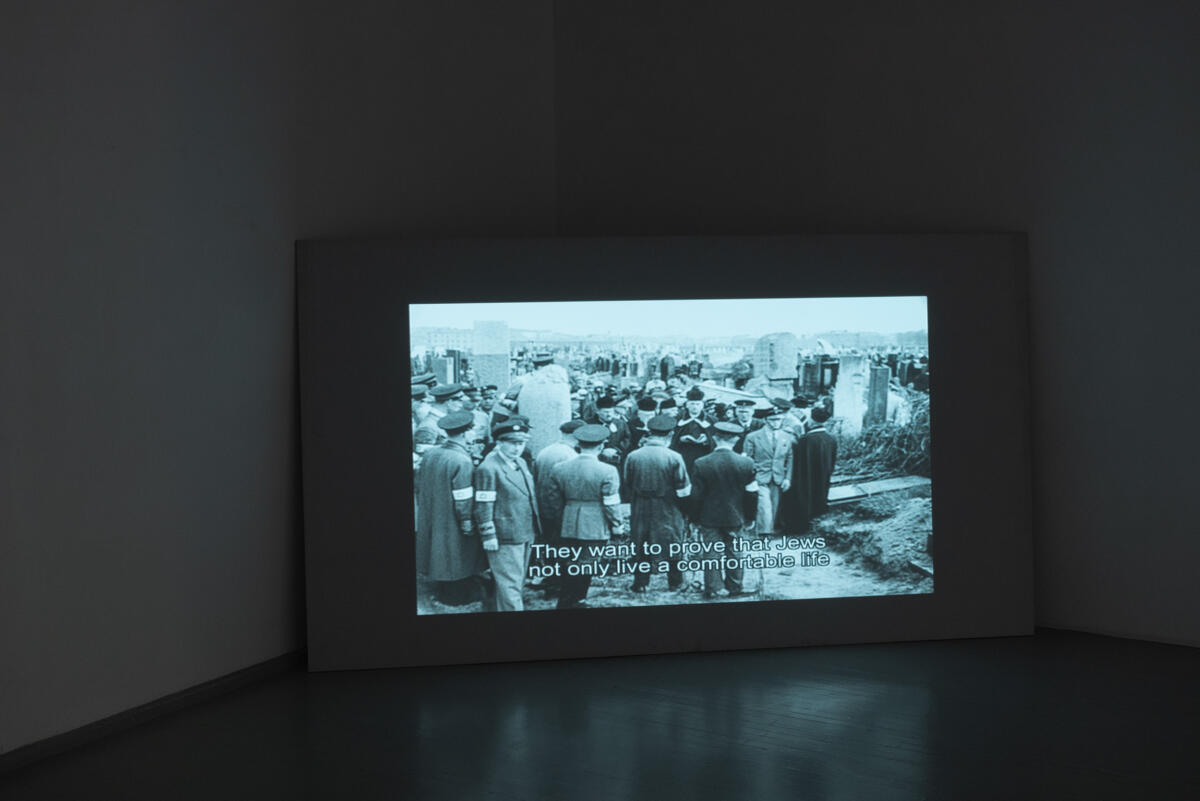![[EN/LT] ‘An Unfinished Project’ at Vartai Gallery](http://blokmagazine.com/wp-content/uploads/2021/01/g-15-1200x801.jpeg)
[EN]
The title “An Unfinished Project” serves as a reflection on life with no certainty, conclusion, or closure. However, it also indicates a potential continuity, a state of reversibility and inexhaustibility. “An Unfinished Project” can be a tag of despair as well as hope. It can point to an event in the past that is still unresolved and serve to characterize future growth.
The exhibition “An Unfinished Project” seeks to whirl our conventional divisions of time, articulating the role of the past as that which one can never overcome, that which does not pass but is rather a continuous event crossing through the present towards the future.
Each of the works displayed here manifests the exhibition’s problematized time tenses in a different way.
Some of the works convey a sense of anticipation and are experienced as a sign of a still to come, yet to be seen, reality. A clear example of which are the 2018 floor doors by Andreas Golinski. Both works are untitled and made of steel, one floor door is open and painted black, another is closed and unpolished. The two works undermine the boundaries and finitude of the exhibition space when creating an illusion of a hidden space underneath it. Where the closed door is an index of an ongoing imprisonment taking place under the floor, the open door is an index of an ongoing flight, therefore, of an active manhunt persisting outside the exhibition space.
Peter Wächtler’s “Fantasy Poster series” (2005) is based on a fantasized picture of a past which the series reenacts and brings back to life. The series is comprised of images taken by the artist during a group activity of a live roleplay inspired by J.R.R. Tolkien’s “The Lord of the Rings” and the speculated ancient timeframe the novel narrates. Originally, Wächtler’s images were printed and displayed as outdoor billboards, but in “An Unfinished Project” they were seemingly displaced and are presented indoors. Their current display not only recollects the speculated antiquity which the images depict and animate, it also recollects the history of the series itself as a group of outdoor billboards.
Willem Boel’s “The New Mills” #21 (2019) suggests its own denial of finitude. The work features a used cart which the artist appropriated, leaving it almost completely untouched, marked by the sediments of its history. Nevertheless, its wheels and provisional appearance imply movement and indeterminacy. Moreover, the work recycles previous works by Boel, which, in the context of the exhibition, does not mean it is set on their elimination but is invested in a ceaseless development (of the previous works and its own).
The burning flames of Ariel Schlesinger’s “Campfire” (2017) introduce the eternal element of transformability, namely, fire. The work is the epitome of a cyclical phase transition between different states of matter. At the same time, it functions as an act of commemoration, a sort of memorial candle by which the past is being evoked.
With the display of Yael Hersonski’s “A Film Unfinished” (2010) and Konstantinas Bogdanas’s “Absence”, the exhibition’s interest in unresolved issues lands on the historical grounds of WWII and the Nazi effort to exterminate the Jewish people. Hersonski’s film is based on the footage of a 1942 Nazi propaganda film pretending to document everyday life in the Warsaw Ghetto months before it was set on fire while its inhabitants are being slaughtered. The film presents the original Nazi footage, interviews with survivors from the ghetto and a reenactment of the testimony of Willy Wist, who was part of the film’s crew as a camera operator.
If Hersonski’s film processes the pressing memory of the holocaust into a sign of presence, Konstantinas Bogdanas processes it through the channel of absence. In the work Absence he produced a mould tracing the contours of stones comprising a segment of a sidewalk in an old Jewish street in Vilnius. Then, he cast liquid bronze into the mould, from which an irregulated pattern of negative spaces was produced, summoning presence through absence and vice versa.
The impossibility to internalize and grasp the traumatic chronology of WWII forces Hersonski and Bogdanas to approach its memory in terms of a life-long inquisition and failure; as an experience of death in life and life in death; as an unfinished project.

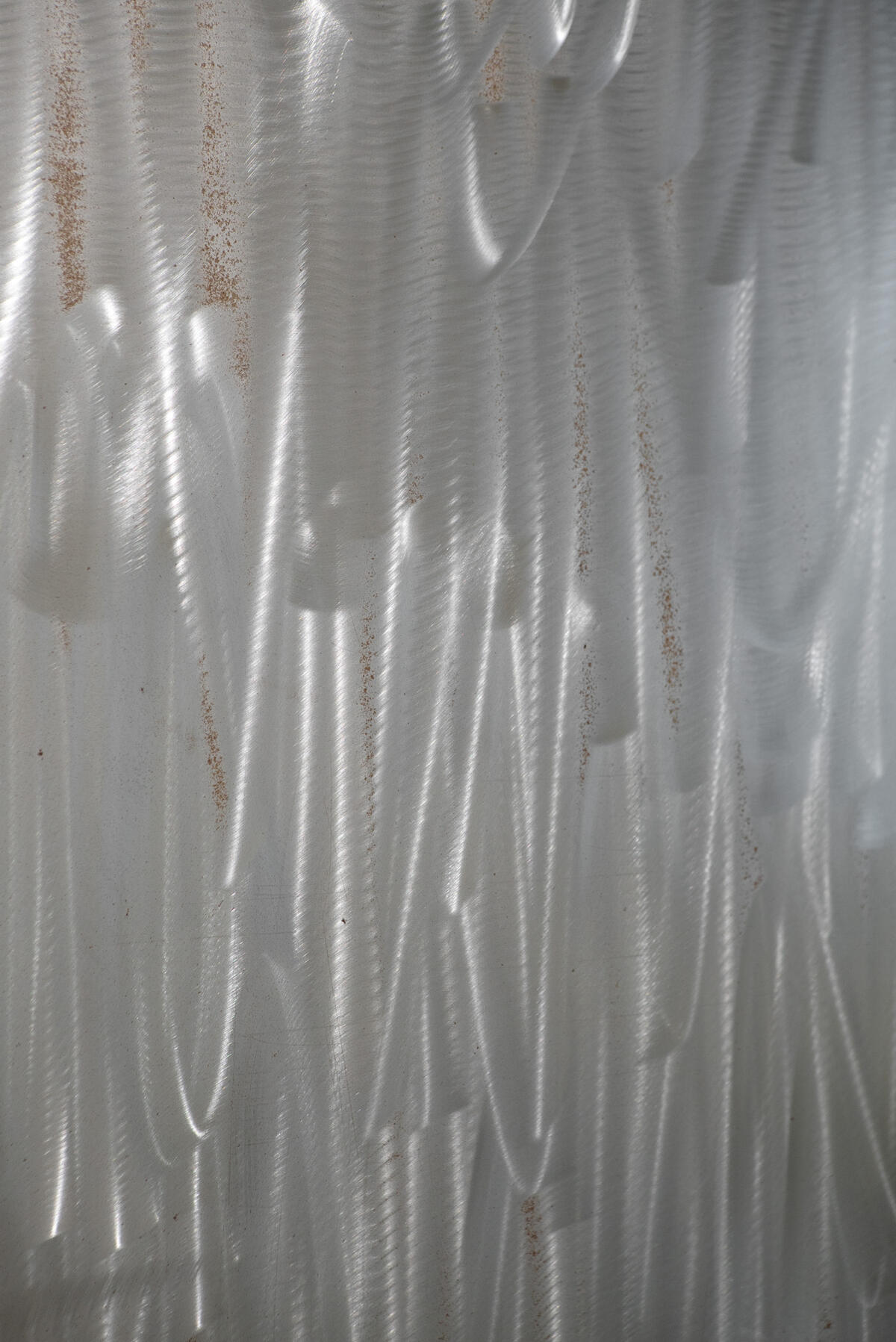
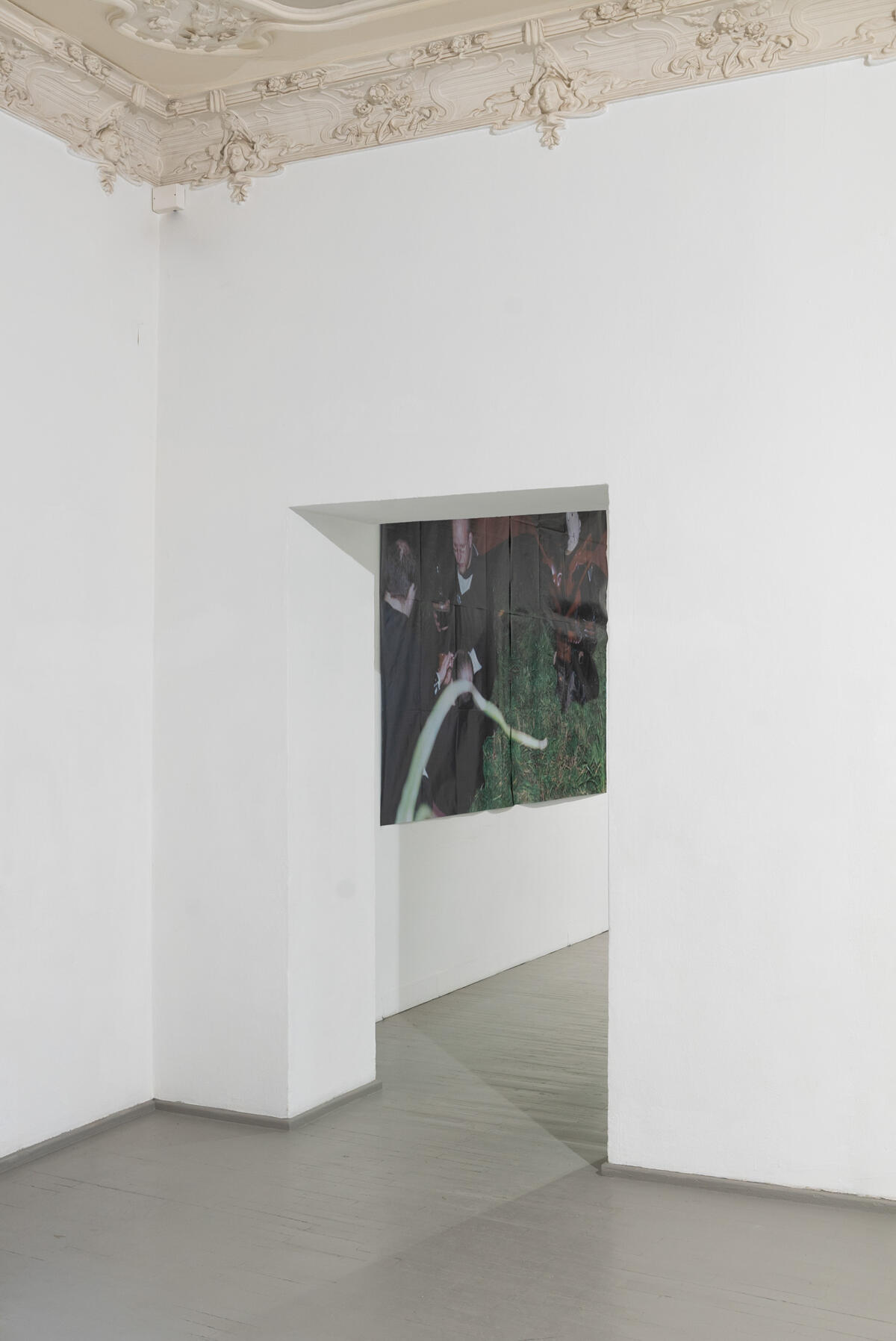
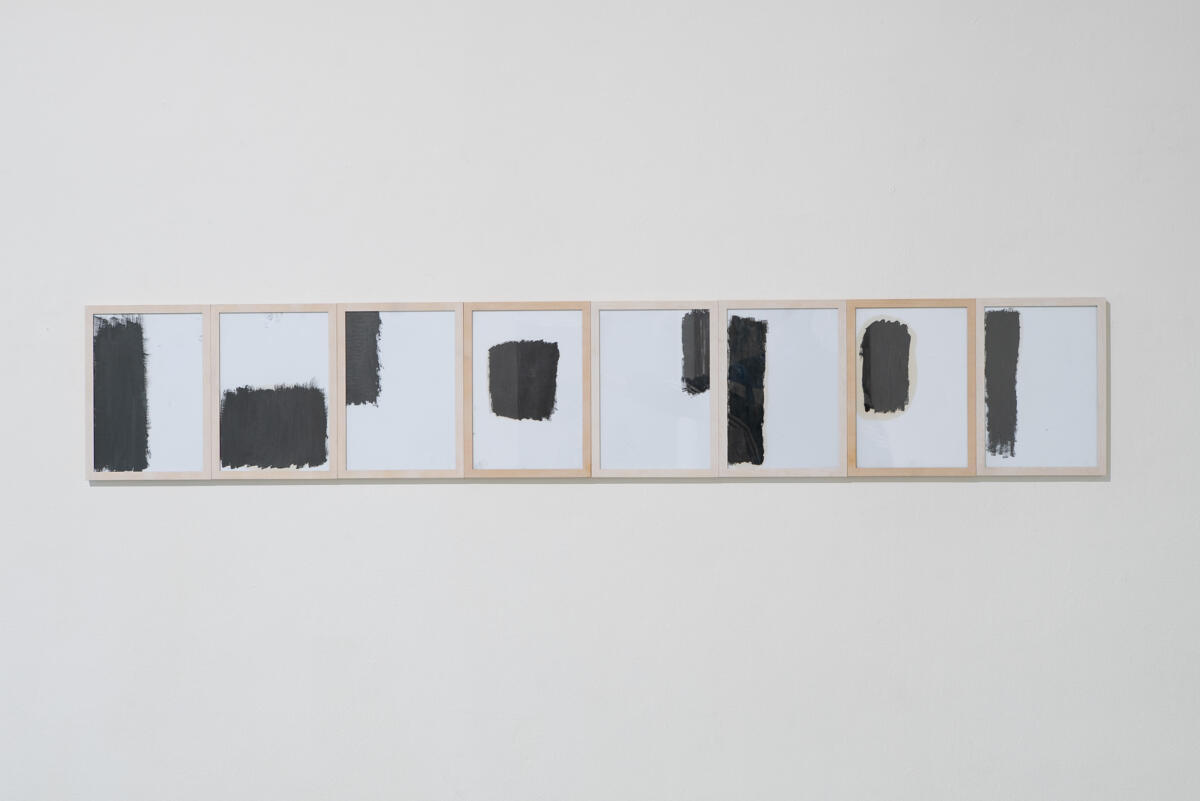

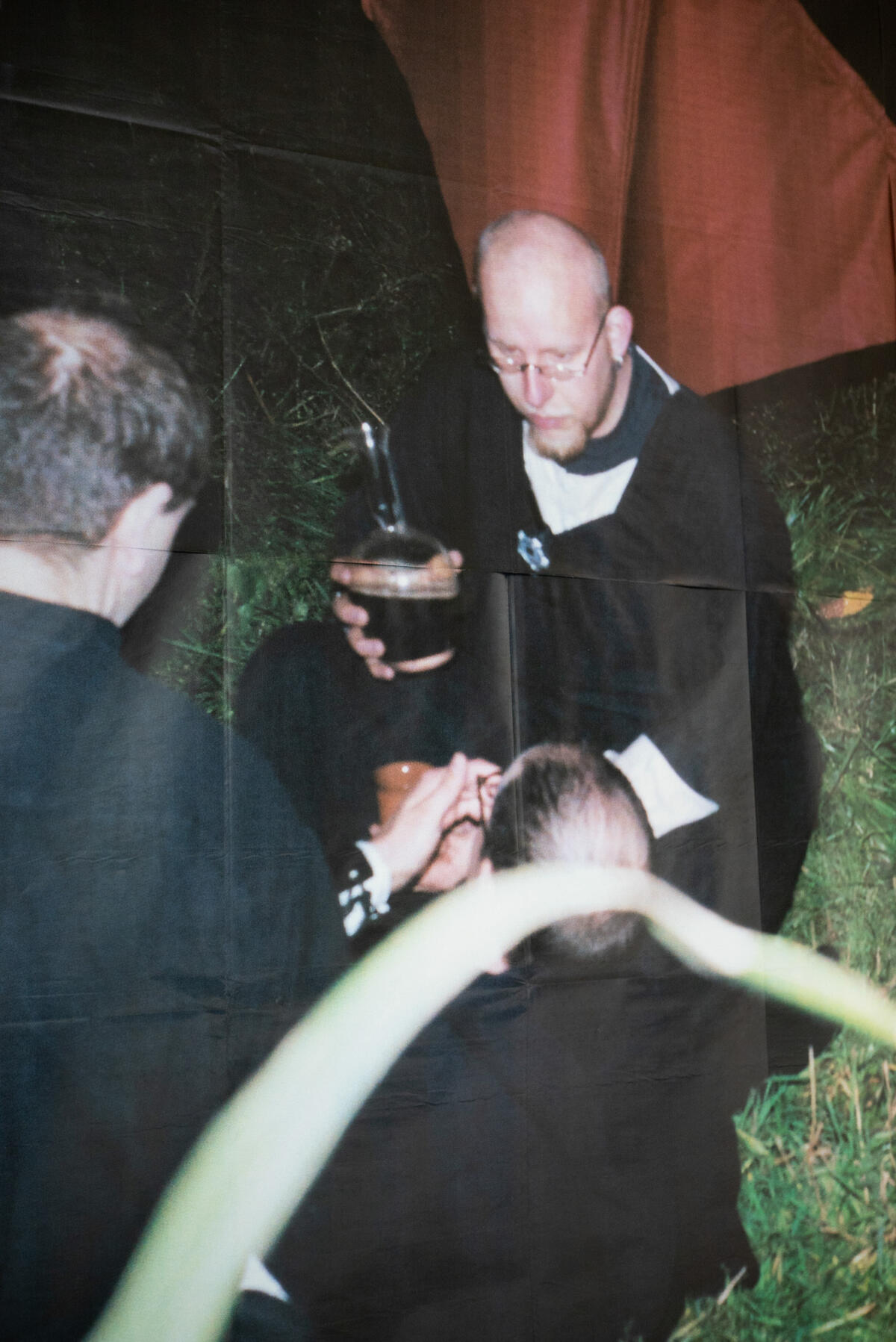
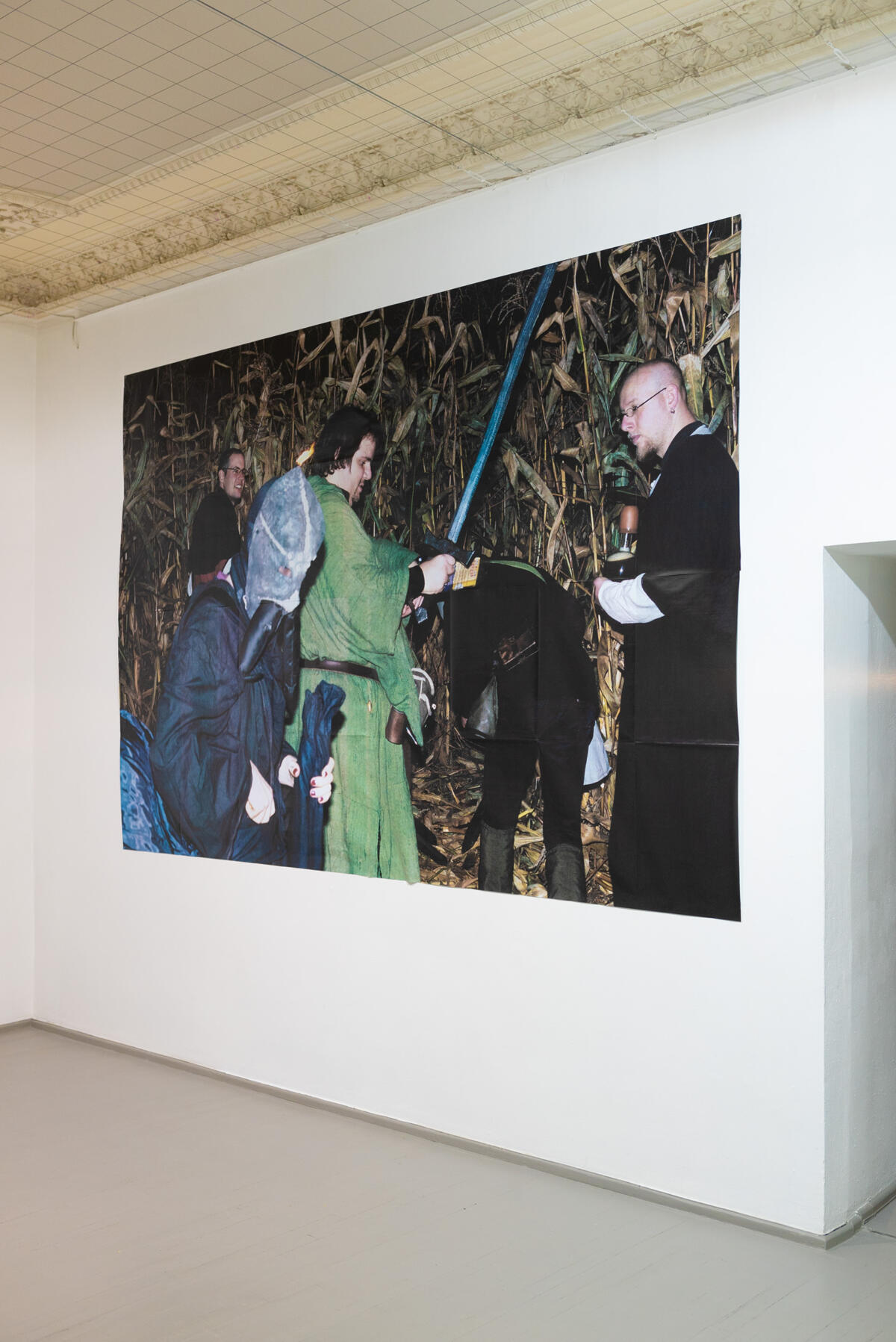

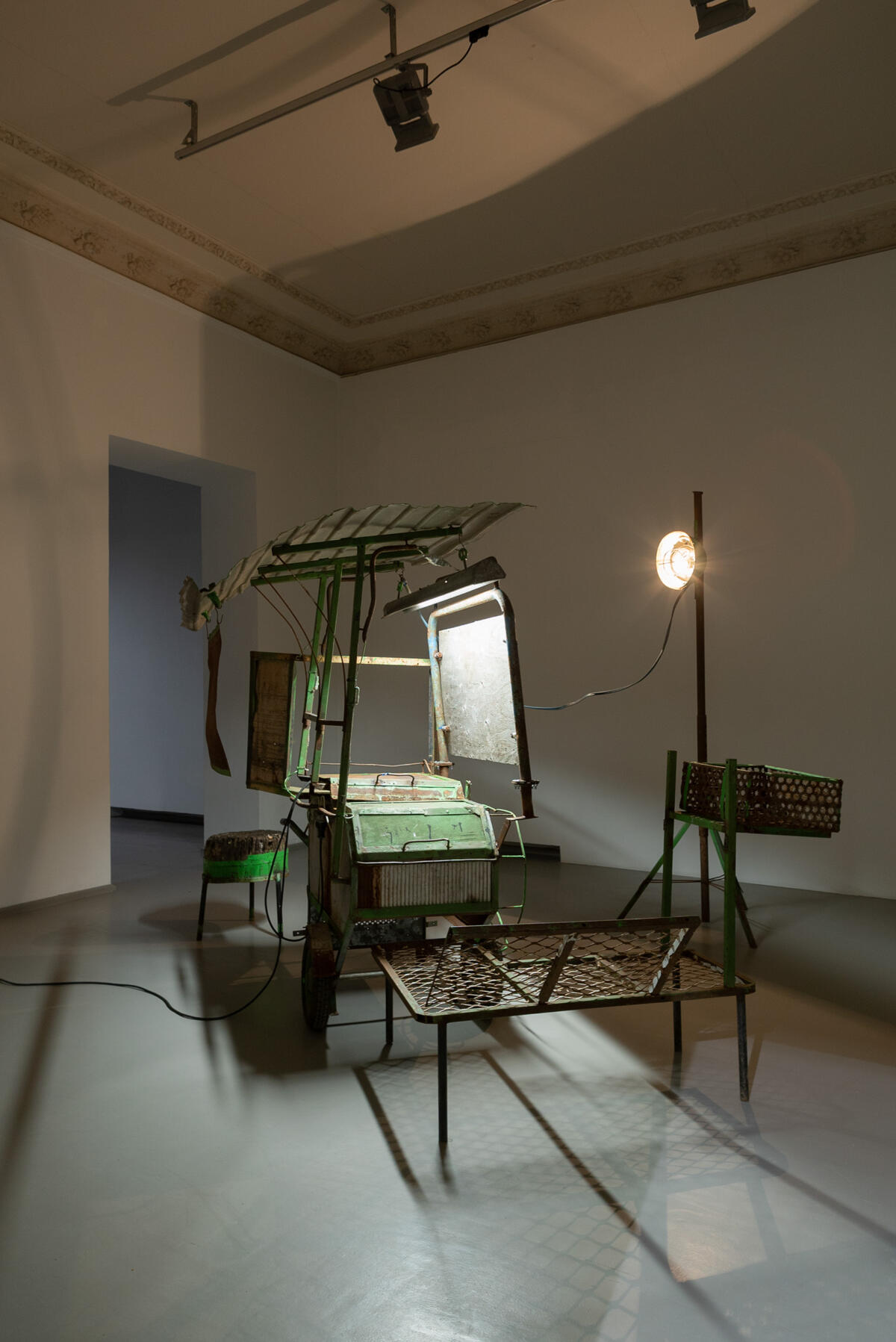

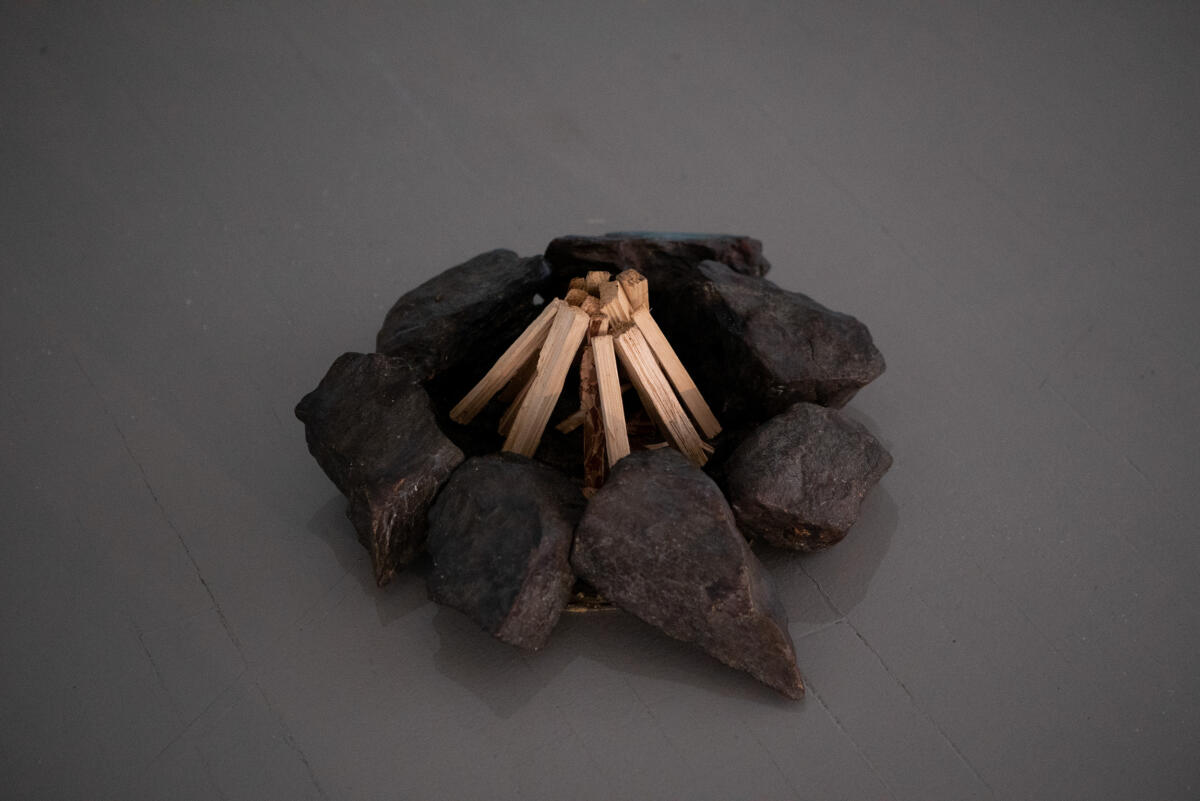
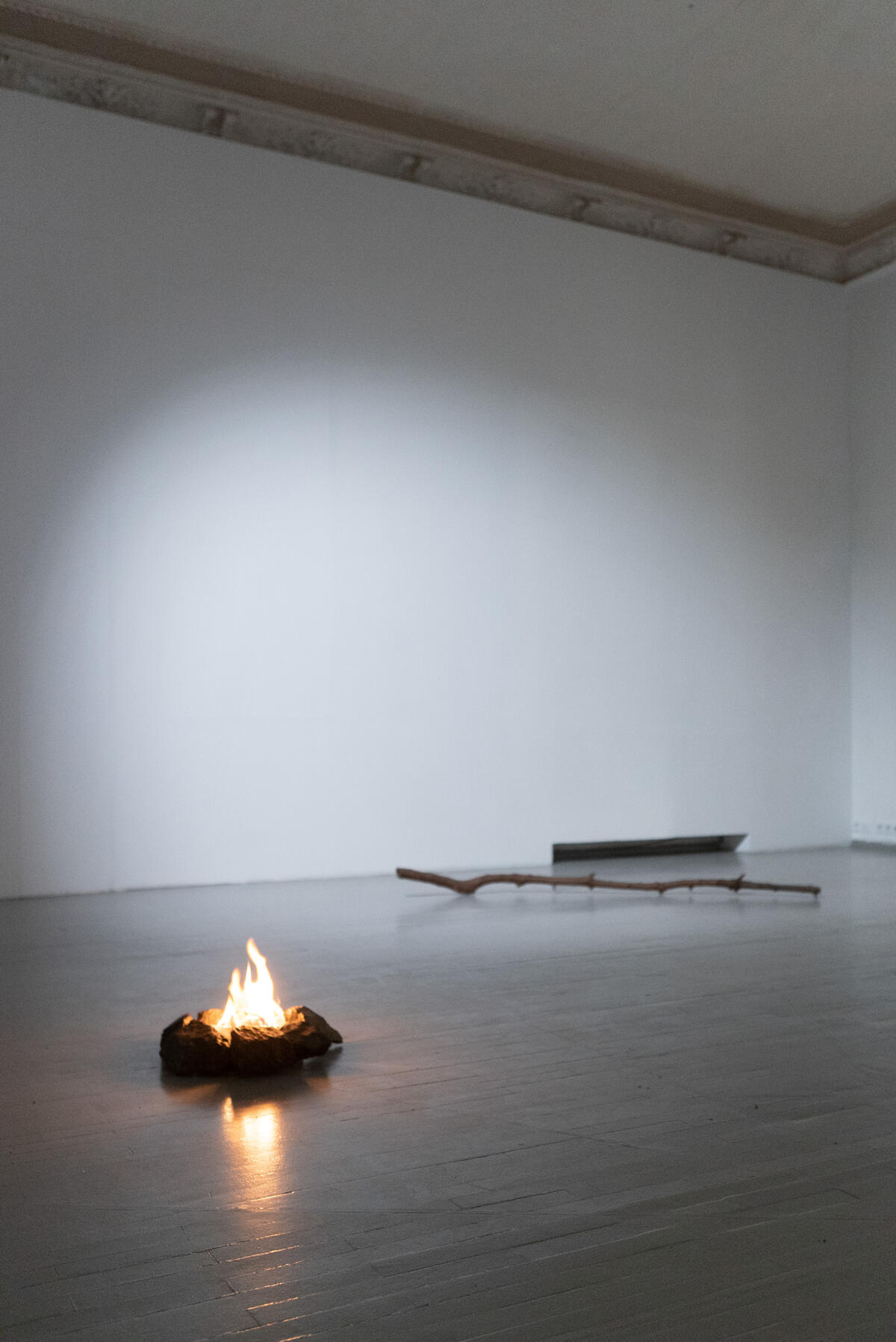
[PL]
Pavadinimas “An Unfinished Project” (liet. „Nebaigtas projektas”) yra nuoroda į gyvenimą be tikrumo, išvadų ar užbaigimo. Tačiau jis taip pat veikia kaip užuomina apie potencialų tęstinumą, grįžtamumo ir neišsemiamumo būseną. Nebaigtas projektas gali žymėti tiek beviltiškumą, tiek viltį. Jis gali priminti neišspręstą įvykį praeityje ar apibūdinti būsimą augimą.
Paroda “An Unfinished Project” siekia sudrumsti mūsų įprastą laiko padalijimą, vaizduodama praeitį kaip niekada iki galo neįveikiamą, nepraeinančią, besitęsiančią per dabartį ateities link.
Kiekviename iš eksponuojamų kūrinių savaip atsiskleidžia parodos nagrinėjami laiko modalumai.
Kai kurie jų perteikia laukimo jausmą, veikdami kaip dar tik ateisiančios realybės ženklas. Akivaizdus pavyzdys yra Andreaso Golinskio 2018 m. sukurtos durys grindyse. Abu kūriniai yra be pavadinimo ir pagaminti iš plieno; vienos grindų durys yra praviros ir nudažytos juodai, kitos uždarytos ir nešlifuotos. Šie darbai suardo parodų erdvės ribas ir baigtinumą, kurdami po ja esančios paslėptos erdvės iliuziją. Kuomet uždarytos durys yra užuomina apie tebevykstantį įkalinimą po grindimis, praviros durys nurodo į pabėgimą – taigi, į už parodinės erdvės ribų vykstančias gaudynes.
Peterio Wächtlerio maginės fantastikos plakatų serija inscenizuoja ir atgaivina sufantazuotą praeitį. Seriją sudaro vaizdai, kuriuos menininkas sukūrė stebėdamas J. R. R. Tolkieno „Žiedų valdove“ vaizduojamos pramanytos senovės įkvėptą grupinį vaidmenų žaidimą. Pirminiame variante Wächtlerio vaizdai buvo atspausdinti ir eksponuoti lauko reklamos stenduose, tačiau “An Unfinished Project” jie perkelti į vidines erdves. Dabartinėje ekspozicijoje iš naujo prisimenama ne tik jų vaizduojama ir atgaivinama įsivaizduojama senovė, bet ir pačios serijos kaip lauko stenduose eksponuotų plakatų istoriją.
Willemo Boelio „Naujas malūnas #21“ (2019) savaip neigia baigtinumą. Kūrinio pagrindas yra menininko rastas senas vežimėlis, eksponuojamas beveik nepakeistas ir su visomis laiko žymėmis. Tačiau jo ratai ir regimas laikinumas byloja apie judėjimą ir neapibrėžtumą. Negana to, darbas perkuria ankstesnius Boelio kūrinius, kas šios parodos kontekste reiškia ne šių sunaikinimą, o dalyvavimą nesibaigiančioje raidoje (ankstesnių kūrinių ir savo paties).
Arielio Schlesingerio „Laužo“ liepsnos (2017) primena apie amžiną transformacijos stichiją – ugnį. Kūrinys įkūnija ciklišką materijos virsmą iš vienos būsenos į kitą. Kartu jis veikia kaip minėjimas – savotiška žvakė praeities atminimui.
Yael Hersonski „Nebaigtame filme“ (2010) ir Konstantino Bogdano „Nebūtyje“ dėmesys sutelkiamas į neišspręstus klausimus, susijusius su Antruoju pasauliniu karu ir nacių bandymu išnaikinti žydų tautą. Hersonski filmas remiasi 1942 m. nacių propagandiniu filmu, tariamai dokumentuojančiu kasdienį gyvenimą Varšuvos gete likus keliems mėnesiams prieš jo padegimą, kol jo gyventojai yra žudomi. Filme pateikiama originali nacių filmuota medžiaga, interviu su getą išgyvenusiais žmonėmis ir operatoriaus Willio Wisto liudijimo inscenizacija.
Kuomet Hersonski filmas paverčia slegiančią Holokausto atmintį buvimo ženklu, Konstantinas Bogdanas reflektuoja ją per nebūtį. Kūrinyje „Nebūtis“ jis pagamino liejimo formą, atkartojančią senos Vilniaus žydų gatvės grindinio akmenų kontūrus, tuomet įliejo į formą skystą bronzą, sukurdamas nereguliuojamą negatyvių erdvių struktūrą, bylojančią apie buvimą per nebūtį ir atvirkščiai.
Antrojo pasaulinio karo trauminės chronologijos įsisąmoninimo ir suvokimo neįmanomybė verčia Hersonski ir Bogdaną traktuoti jo atmintį kaip visą gyvenimą trunkantį klausinėjimą ir nesėkmę; kaip mirties gyvenime ir gyvenimo mirtyje patirtį; kaip nebaigtą projektą.
Imprint
| Artist | Willem Boel, Konstantinas Bogdanas, Andreas Golinski, Yeal Hersonski, Ariel Schlesinger, Peter Wächtler |
| Exhibition | An Unfinished Project |
| Place / venue | Vartai Gallery, Vilnius, Lithuania |
| Dates | 17 December 2020 – 22 January 2021 |
| Curated by | Ory Dessau |
| Website | www.galerijavartai.com |
| Index | Andreas Golinski Ariel Schlesinger Konstantinas Bogdanas Ory Dessau Peter Wächtler Vartai Gallery Willem Boel Yeal Hersonski |

